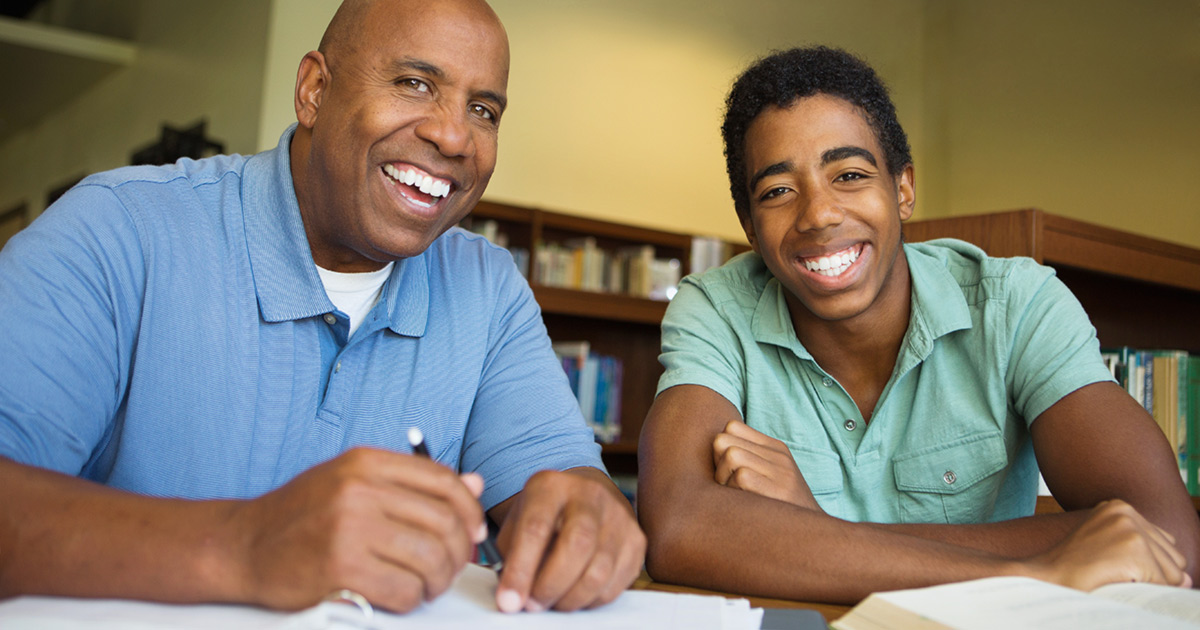
In her viral TED Talk “Every Kid Needs a Champion,” 40-year educator Rita Pierson, recounted a time when she heard a colleague say, “They don’t pay me to like the kids.” Her response: “Kids don’t learn from people they don’t like.” When most of us think back to our time in school, our stories tend to include the teachers with whom we had real, lasting connections. Our favorite teachers often changed our outlook on learning, made class fun, and inspired us to push beyond what we thought we could do.
How do those things happen? Through positive student-teacher interactions and relationships, which are truly the gateway to learning.
The new 3 R’s and safety first
In their new book, Relationship, Responsibility, and Regulation: Trauma-Invested Practices for Fostering Resilient Learners, Pete Hall and Kristin Van Marter Souers propose going beyond the traditional three R’s of reading, ’riting and ’rithmetic to a new trauma-informed set of R’s:
- Relationship
- Responsibility
- Regulation
“These overarching ideas shape the positive learning environments we are establishing,” say the authors. “They enhance the focus on the whole child. Student success — by whatever metric we use to define it — is going to be determined by the degree to which we can infuse these three components into the day-to-day operation of our classrooms, learning spaces, offices, and schools.”
When educators foster safe, loving, and close relationships with students, kids are more open to learning. Relationships are the key to motivating them. When students become open to learning, a culture of accountability and self-regulation can occur. Hall and Van Marter Souers refer to the safe and welcoming learning environment as “the nest.”
The idea of prioritizing safety and building a safe classroom nest isn’t new. “For those of us in education, this notion of “safety first” shouldn’t be surprising. More than 70 years ago, Abraham Maslow introduced his hierarchy of needs, which explained that beyond the basic physiological needs we have as human beings, safety is the essential external factor influencing our happiness, success, and very survival,” according to the authors.
Relationships and behavior management
When students have strong bonds with their teachers, they are less likely to act out or disrupt classroom time. “If a teacher has a good relationship with students, then students more readily accept the rules and procedures and the disciplinary actions that follow their violations,” says Robert Marzano in his book Classroom Management That Works: Research-Based Strategies for Every Teacher. “Without the foundation of a good relationship, students commonly resist rules and procedures along with the consequent disciplinary actions. Again, this makes good intuitive sense.”
Who wants to disappoint a teacher they love? Positive teacher-student interactions can stop the cycle of misbehavior, change the classroom dynamic, and improve a student’s academic performance.
Equity in teacher-student relationships
Some kids seem impossible to get to know or it’s difficult to get past their challenging behavioral issues. But relationship equity is critical. “Students notice differential treatment, and they know who the teacher likes and does not like,” says Douglas Fisher, Nancy Frey, and Russell J. Quaglia in their book Engagement by Design: Creating Learning Environments Where Students Thrive. “That’s not to stay that teachers should not differentiate curriculum and instruction; they should. But the relationships between teachers and students is not one of the areas to consider for differentiation. Every student in the class needs a fair chance to develop a healthy relationship with the teacher.”
To get through the day, it can become a habit to avoid or negatively engage with some students with whom you have a chilly relationship. However, all students deserve the best of you and a chance at forming healthy, academic relationships. Moreover, those positive relationships will likely translate into resilience and more successful learning outcomes.
Monitoring your unintentional behaviors
It can be easy to wear your frustration on your sleeve when a student is acting out. Those behavior patterns tend to stick and suddenly, you’re stuck in an ongoing negative relationship with a student who knows you’re not a big fan. “It’s up to you to initiate and cultivate productive relationships, even with the hardest-to-reach kids,” say Fisher, Frey, and Quaglia. “We’re not selecting our friends; we’re teaching youngsters. Accordingly, we work hard to develop equitable relationships with all of the students.” The authors suggest intentionally monitoring behavior patterns that send messages to students that they are not liked. This includes your responses to students — including verbal replies and your body language. A subtle facial expression can signal to a student how you feel about them.
The feedback we provide is also a tell. Ensure that your verbal and written feedback is consistent across the class. Ensure that you don’t intentionally or unintentionally avoid certain students while fawning over others. A student can feel the distance when a teacher casts a wide berth around them.
Lastly, personal regard includes things like courtesy, politeness, warmth, and proximity. Students pick up on a teacher who distances themselves or avoids interactions altogether. Make the effort and make it every day, even when it seems futile. You often don’t know what little moments stay with them, yet each interaction has the potential to improve relationships, your classroom culture, and their lives.
Jennifer L.M. Gunn spent 10 years in newspaper and magazine publishing before moving to public education. She is a curriculum designer, teaching coach, and high school educator in New York City. She is also co-founder of the annual EDxEDNYC Education Conference for teacher-led innovation and regularly presents at conferences on the topics of adolescent literacy, leadership, and education innovation.
Categorized as: Tips for Teachers and Classroom Resources
Tagged as: Mid-Career Teacher, New Teacher, Teacher Leadership, Teaching Impact, Veteran Teacher
